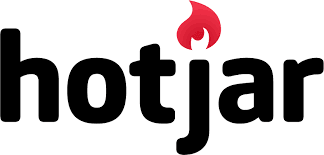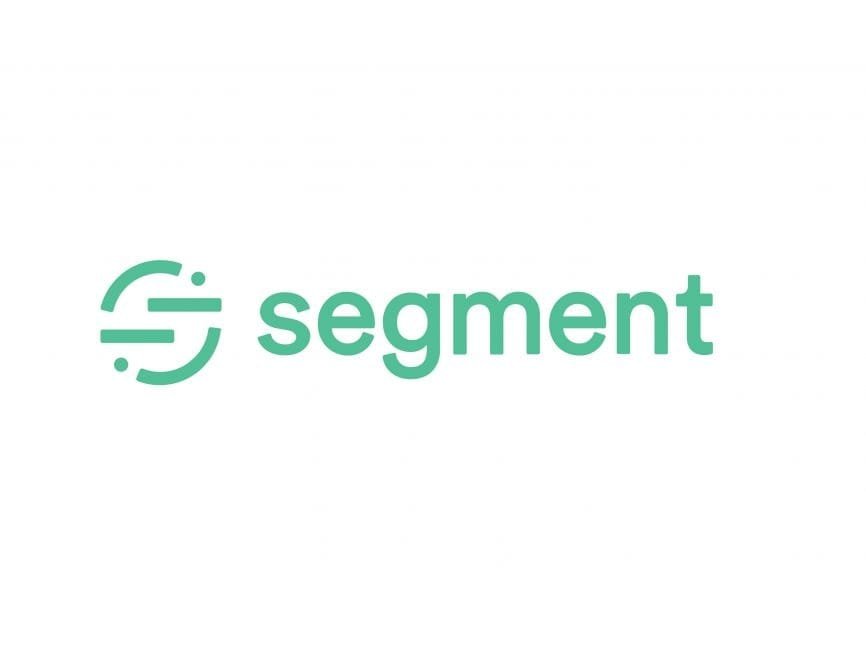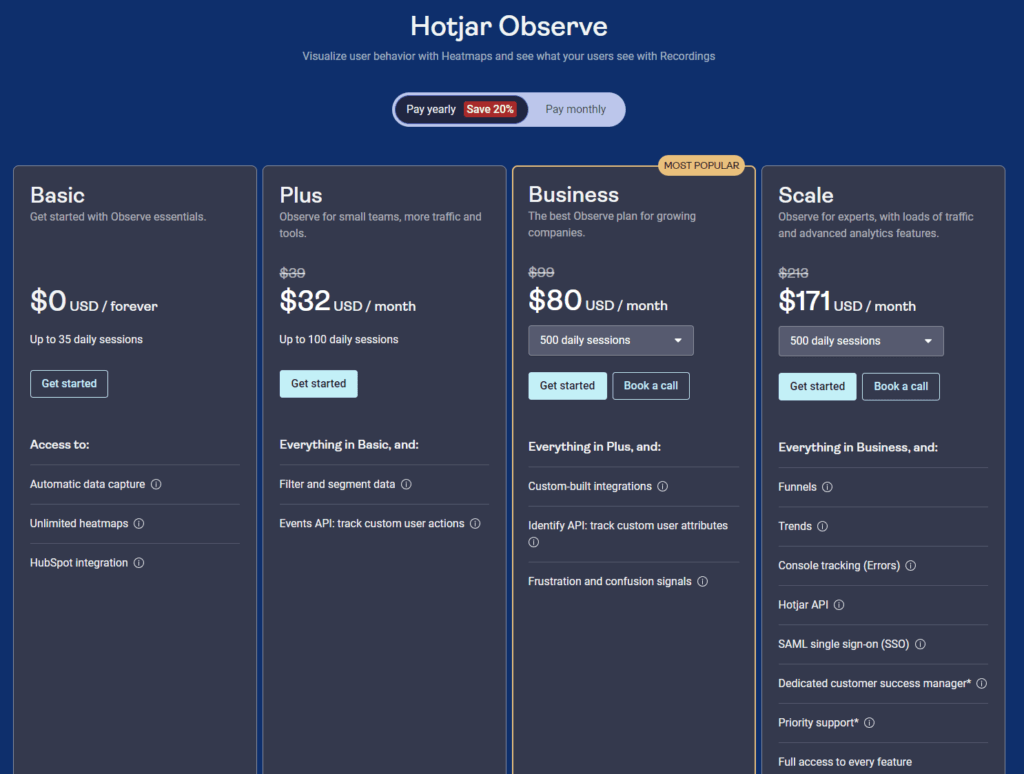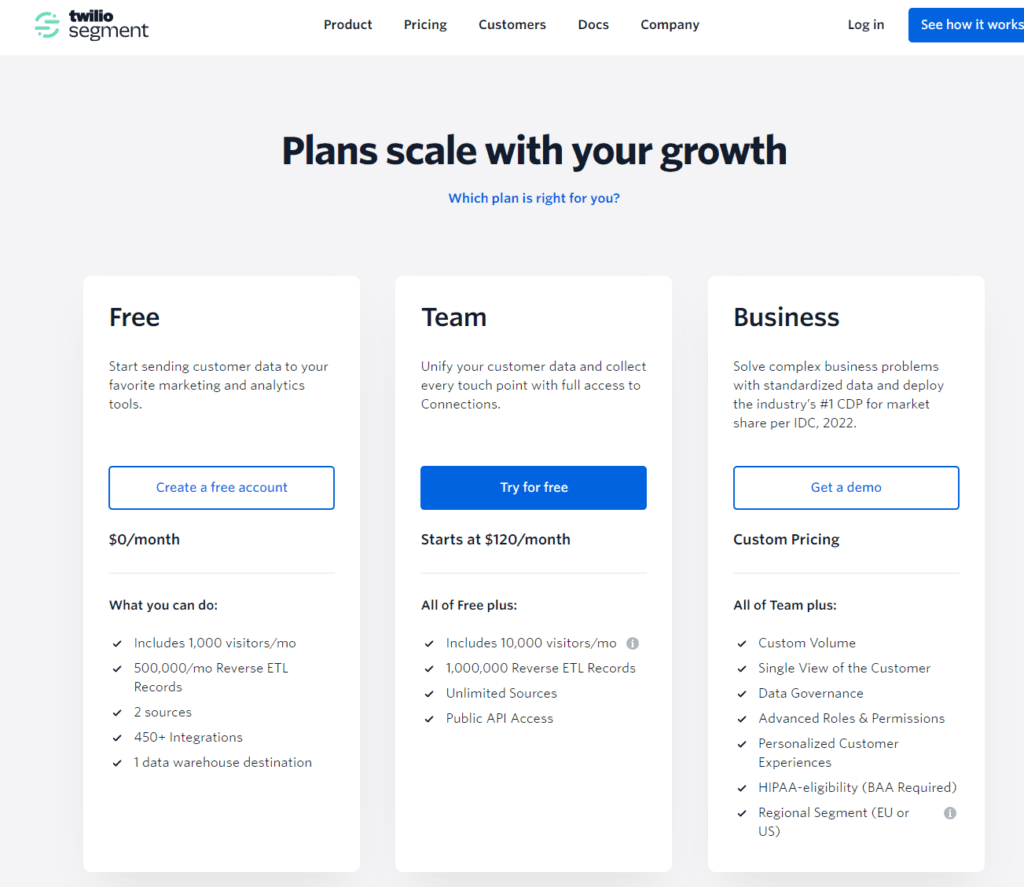In the ever-evolving digital world, the quest for the perfect analytics tool can seem daunting. Two names that often pop up in this search are Hotjar and Segment. Both tools offer powerful insights, but they do so in markedly different ways. Hotjar shines a light on how users interact with your site, offering a window into their behaviors and preferences. Segment, on the other hand, acts as a data hub, collecting, managing, and routing your user data to other analytics tools for a comprehensive understanding of user interactions across platforms. If you’re wondering which tool is the right fit for your analytics needs, you’re in the right place. Let’s dive into the nitty-gritty of what makes each tool stand out.
| Hotjar | Segment |
|---|---|
 |  |
| G2 Score – 4.3 out of 5 stars | G2 Score – 4.6 out of 5 stars |
| TrustRadius Score – 8.2/10 | TrustRadius Score – 8.3/10 |
Data Collection and Integration
Hotjar: Focused on User Experience Data
Hotjar emphasizes a user-centric approach to data collection, targeting the interactions users have with a website to uncover insights into behavior, preferences, and obstacles within the digital experience. By employing tools like heatmaps, session recordings, and feedback polls, Hotjar captures a qualitative view of the user journey. This method offers direct visibility into how users navigate a site, where they engage most, and where they may encounter frustration.
The integration capabilities of Hotjar are streamlined to support its core functionality. Easily embeddable into any website with just a snippet of code, Hotjar seamlessly begins collecting data without the need for complex setup processes. This ease of integration extends to its compatibility with a variety of web development frameworks and content management systems, ensuring that businesses of all sizes can start understanding their users’ behavior right away. While Hotjar may not specialize in the extensive data routing capabilities seen in more comprehensive analytics platforms, its strength lies in quickly providing actionable insights specifically related to improving website user experience.
Segment: Master of Data Integration
Segment presents itself as a powerhouse in data integration, designed to act as the central infrastructure for collecting, managing, and routing data across an entire analytics and marketing tech stack. It excels in capturing data from every touchpoint—whether it’s a website, mobile app, server, or cloud application—and consolidating this information into a single, coherent view. This capability allows businesses to break down silos between different data sources, providing a unified dataset that can be analyzed for comprehensive insights across user interactions.
What sets Segment apart is not just its data collection prowess but its sophisticated integration with a wide array of tools and platforms. This means that data collected via Segment can be seamlessly sent to hundreds of analytics, marketing, and data warehousing tools without the need for individual integrations. This flexibility transforms Segment into a versatile data infrastructure layer that supports a broad range of data analysis, visualization, and marketing automation activities, making it an invaluable asset for businesses looking to leverage data across multiple dimensions of their operations.
User Interface and Ease of Use
Navigating the Analytics Journey
Hotjar: The Epitome of Intuitive Design
Hotjar’s platform is a paragon of intuitive design, crafted to ensure that even users with minimal technical expertise can quickly leverage its suite of tools. The dashboard greets users with a clean, straightforward layout, where key features like heatmaps, session recordings, and feedback polls are just a click away. This simplicity is deliberate, minimizing the time from login to insight, thereby accelerating the process of data-driven decision-making.
The clarity of Hotjar’s interface extends to its visualization tools, which transform complex user behavior data into accessible, easily interpretable formats. Heatmaps, for instance, use color gradients to instantly convey areas of high and low engagement, while session replays offer a direct window into the user experience with simple playback controls. This focus on simplifying the complex ensures that insights are not just gathered but are readily actionable, empowering teams across functions to engage with and benefit from the data.
Segment: Mastering Complexity with Clarity
Segment approaches its user interface with a clear understanding of the complexity inherent in data integration and management. The challenge it tackles is significant: to make the intricate process of collecting, unifying, and routing data from myriad sources as straightforward as possible. The dashboard, therefore, is designed to offer a comprehensive overview of the data flow, with detailed yet clear visualizations of how data moves through the system.
While Segment’s platform deals with fundamentally complex operations, the interface strives to demystify this complexity. It guides users through the setup and management of data pipelines with visual cues and structured workflows, aiming to reduce the cognitive load and make data integration accessible. For businesses embarking on sophisticated data strategies, Segment’s interface offers the clarity needed to manage these complexities, supported by extensive documentation and learning resources to aid users in navigating its advanced features.
Customer Support and Community Engagement
Extending Beyond the Platform
Hotjar: Personalized Support and an Engaged Community
Hotjar stands out for its approachable and responsive customer support. The platform offers a variety of support channels, including email support, an extensive knowledge base, and interactive webinars. These resources are designed to help users maximize their use of Hotjar, providing guidance on everything from setting up heatmaps to interpreting session recordings. Hotjar’s commitment to customer support reflects its overall user-friendly ethos, aiming to make web analytics as accessible and actionable as possible.
Beyond direct support, Hotjar benefits from a vibrant community of users. Digital marketers, UX designers, product managers, and other professionals frequently share insights, tips, and strategies across various forums and social media platforms. This community engagement fosters a collaborative environment where users can learn from each other’s experiences, leveraging collective knowledge to enhance their own website analytics efforts.
Segment: Robust Support for a Data-Driven Ecosystem
Segment, catering to businesses with complex data integration needs, offers a comprehensive suite of customer support options. This includes dedicated account management for enterprise customers, 24/7 technical support, and a rich online resource center filled with guides, tutorials, and case studies. Segment’s support infrastructure is designed to assist businesses in navigating the complexities of data integration, ensuring that users can effectively manage their data pipelines and maximize the platform’s capabilities.
The Segment community, while perhaps more technically inclined, is an invaluable resource for users looking to deepen their understanding of data integration and analytics. Through forums, user groups, and industry events, Segment users exchange knowledge, best practices, and innovative uses of the platform. This vibrant ecosystem not only enhances the user experience but also drives the platform’s evolution, as Segment incorporates user feedback into continuous product improvement.

Related: Check out our free SEO suite

Data Analysis and Visualization Capabilities
From Insight to Action
Hotjar: Simplified Visual Insight into User Behavior
Hotjar focuses on making the complex world of user behavior both accessible and actionable through intuitive visualization tools. The platform excels in offering a suite of features that allow businesses to see, quite literally, how users interact with their website. Heatmaps provide a color-coded visual representation of user clicks, taps, and scrolling behavior, painting a vivid picture of user engagement and areas for improvement. Session replays add another layer to this understanding, offering a video-like playback of user journeys, which can highlight usability issues and drop-off points that might not be apparent from quantitative data alone.
The visualization capabilities of Hotjar extend to its feedback tools as well, which collect user opinions and sentiments directly. These insights are presented in a clear, digestible format, allowing for quick identification of common themes or concerns raised by users. This direct link to the user’s voice transforms abstract metrics into tangible feedback that can guide website enhancements and user experience optimizations.
Segment: The Foundation for Advanced Analysis and Visualization
Segment, with its role as a data integration platform, sets the stage for advanced analysis and visualization by funneling data into the tools specifically designed for those purposes. While not a visualization tool in itself, Segment’s strength lies in its ability to collect and unify data from every touchpoint of the user journey, providing a holistic view of customer interactions. This comprehensive data collection is critical for businesses that rely on multiple platforms to engage with their audience, as it ensures that all data analysis and visualization tools in their stack can draw from the same unified data source.
By serving as the central hub for data, Segment enables businesses to leverage sophisticated analytics and visualization tools tailored to their specific needs. Whether it’s creating detailed customer segmentation, performing cohort analysis, or forecasting future trends, the insights gained through these tools can be visualized in custom dashboards and reports that inform strategic decision-making. The power of Segment lies in its ability to enable these deeper dives into data, providing the foundation upon which businesses can build a robust data-driven culture.
PricingCost and Investment Return
Maximizing Value for Your Business
Hotjar: Cost-Effective Insights into User Behavior

Hotjar is known for its straightforward and transparent pricing model, designed to cater to businesses of various sizes, from startups to large enterprises. With a free tier available, Hotjar offers businesses the opportunity to start gathering valuable insights without an initial investment. As needs grow, Hotjar provides scalable pricing tiers that increase in functionality and capacity, allowing businesses to choose a plan that best fits their requirements without overspending.
The investment in Hotjar is often justified by the immediate improvements businesses can make to their website’s user experience. By understanding how users interact with their site, businesses can make data-driven decisions that enhance usability, increase conversions, and ultimately, improve revenue. The direct feedback gathered through polls and surveys also offers qualitative insights that can lead to impactful changes, further contributing to a strong return on investment.
Segment: Strategic Data Infrastructure for Long-term Growth

Segment, on the other hand, positions itself as a foundational tool for businesses serious about building a comprehensive data analytics strategy. The platform’s pricing reflects its capability to integrate and manage data across multiple touchpoints and systems, offering a solution that scales with the complexity and volume of your data needs. While the initial cost may be higher compared to Hotjar, Segment is an investment in creating a centralized, efficient data infrastructure that can feed into every aspect of business analytics and decision-making.
The return on investment for Segment comes from the efficiencies gained in data management, the accuracy of a unified data source, and the strategic insights derived from comprehensive analysis across platforms. For businesses leveraging multiple analytics and marketing tools, Segment’s ability to streamline data flow and ensure consistency can lead to significant cost savings over time, not to mention the increased revenue potential from targeted, data-driven strategies.
Conclusion
Hotjar stands out as a beacon for businesses prioritizing an intuitive understanding of user behavior on their websites. Its strengths lie in offering direct, visual insights that are accessible and actionable, making it a favored choice for teams seeking to enhance user experience and conversion rates without delving into complex data analytics.
Segment, on the other hand, positions itself as a robust data infrastructure platform, ideal for businesses aiming to unify and leverage user data across multiple touchpoints and systems. It shines in its ability to simplify complex data integration processes, providing a foundation for comprehensive, cross-platform analytics strategies that inform strategic decision-making.
Read Next:
- Adobe Analytics vs Baremetrics: The Best Marketing Analytics Tool for You
- Adobe Analytics vs Kissmetrics: The Best Marketing Analytics Tool for You
- MoonMail vs Sendy: The Best Email Marketing Tool for You
- Dispute Resolution for Smart Contracts: Challenges and Opportunities
- 31+ Top Social Media Management tools Compared! (2023)






















Comments are closed.